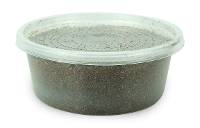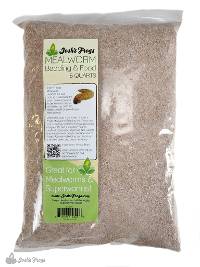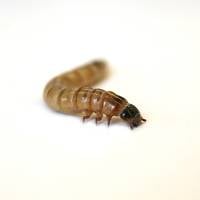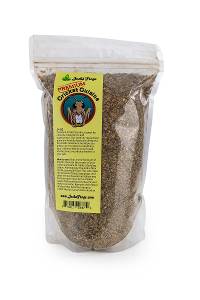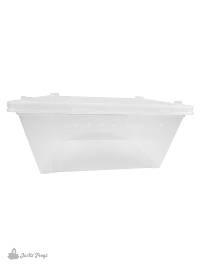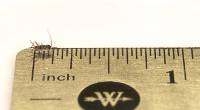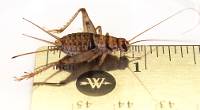Josh's Frogs
Why you should buy from us
Bearded Dragon - Pogona vitticeps (Keeper's Choice)
Bearded Dragon - Pogona vitticeps (Keeper's Choice)
$69.99 0.0 out of 5 stars
(0)
0.0 out of 5 stars
(0)About This Product
Defining Characteristics:
- Hardy
- Easy-going, inquisitive personality
- Vast array of beautiful morphs
- Omnivorous
- Very thoroughly researched and well understood
Name: Pogona vitticeps, commonly known as the Central Bearded Dragon or Inland Bearded Dragon. Commonly shortened to Bearded Dragon.
Recommended Enclosure Size & Setup: Bearded Dragons are active, semi-arboreal lizards, and will only thrive in enclosures that allow them to get the exercise they need. A 24x18x18 enclosure will house a baby animal for the first few months of its life, but it will quickly outgrow this size enclosure. By the time they reach adult size, they should not be housed in an enclosure any smaller than 4’x2’x2’.
Naturally derived fine-grain sands such as Zoo Med Reptisand work great as a substrate, and can also have organic topsoil and trace amounts of non-expanding clay added to aid with burrow retention. Impaction is not a risk as long as proper husbandry standards are maintained. Substrate should be spot-cleaned when soiled. Calcium and Vita sands should not be used. Non-loose floor coverings such as slate tile can also be used, but should be cleaned regularly to avoid bacterial growth.
An arid to semi-arid bioactive enclosure is strongly recommended for this desert-born species.
Being semi-arboreal lizards, plenty of low-lying climbing opportunities need to be provided for Bearded Dragons to exercise properly. Cork bark and manzanita branches are an excellent option to achieve this. Any heavy material should either be resting on the bottom of the enclosure or secured to the walls, as Bearded Dragons are strong, heavy bodied animals that could easily crush themselves when digging underneath cage decor.
Temperature/Lighting: Ambient daytime temperatures for Bearded Dragons should be kept between 75-85°F, while nighttime temperatures can be allowed to fall as far as the mid 60s. Bearded Dragons require a daytime basking spot of around 110°F which can be provided using an overtank heating bulb. Basking spots should be large enough in diameter such that the animal can fit their entire torso within the heated area. Heat rocks should not be used.
Ambient temperatures should be monitored with a digital thermometer, and the basking spot should be monitored with an infrared temperature monitor.
In addition, Bearded Dragons are diurnal, sun-worshipping lizards, so UVA/UVB radiation is absolutely critical for their physical health and mental well-being. UVA/UVB lighting should be focused on their basking site and feature Ferguson Zone 3 levels of UV radiation, and be provided opportunities to escape from high UV levels throughout the rest of their enclosure.
Bearded Dragons with morphs that reduce scalation, such as Leatherbacks and Silkbacks, should have slightly reduced amounts of UV radiation, as higher levels may burn their sensitive skin. The rest of their enclosure should be kept well-lit during the day with regular white light fixtures.
Humidity: Bearded Dragons are hardy animals adapted to the harsh, scorching conditions of the Australian outback, and do best in lower humidities of around 30-50%. Bearded Dragons should not be exposed to humidity levels above 60% for any significant amount of time.
Bearded Dragons with morphs that reduce scalation, such as Leatherbacks and Silkbacks, do better with slightly higher humidity levels.
Ambient humidity should be monitored with a digital hygrometer. Appropriate humidity levels can be achieved with a shallow water dish as well as occasional light misting (1-2 times per week), though it should be noted that Bearded Dragons will get the majority of their water through their food.
Size: Bearded Dragons are around 3 inches long when they first hatch, but grow very rapidly. Most adult Bearded Dragons attain lengths around 16-24 inches, although certain morphs such as German Giant lines can grow as large as 32 inches long and weigh up to 1,000 grams (~2.2 pounds). These are quite hefty lizards!
Age: Provided proper husbandry, Bearded Dragons live anywhere between 10-20 years in captivity.
Bearded Dragons sold by Josh's Frogs are at least 6 weeks old.
Feeding: Bearded Dragons are omnivorous, and require both insect feeders and leafy greens/vegetables as a part of their staple food rotations. It is especially important to maintain the correct balance of insects to greens, which will change as the lizard ages. Babies will require around 80% insects to 20% plant matter, whereas adults will require around 20% insects to 80% plant matter. The easiest way to accomplish this is to offer greens daily, and gradually reduce the amount of insects offered as the animal ages; babies should be offered insects approximately twice a day, and adults should be offered insects about 1-2 times a week.
We provide all of the feeder bugs you will need! A staple of crickets and dubia works best, with other feeder insects (waxworms, hornworms, superworms, etc.) being offered as occasional treats. Offering insects in an escape-proof feeding bowl will minimize the number of bugs that escape and hide among the enclosure.
Feeder insects should be gutloaded the day prior to feeding and dusted with a vitamin/mineral supplement; we recommend Repashy Calcium Plus LoD with every feeding. Always read the label of any supplement offered to ensure your animal is receiving appropriate amounts of calcium and vitamins.
Knowing what greens and vegetables to offer can be tricky, and it is always best to consult a feeding chart before deciding what to feed. In general, leafy greens high in nutrients should be staple, with other vegetables mixed in for variation.
Fruits can be offered as treat items. Avoid Iceberg and Romaine lettuce, as they are both lacking in nutrients, and avoid avocado, citrus fruits, mushrooms, onion, and rhubarb, as they are all toxic.
Sexing: Bearded Dragons can begin to show secondary sex characteristics at a surprisingly young age, but are most reliably sexed at around 8 months.
Males will exhibit large and pronounced femoral pores on their inner thighs, as well as hemipenal bulges at the base of their tail.
Color/Pattern: Bearded Dragons are typically hues of sandy brown and gray. However, being one of the most extensively bred animals in the exotic pet industry, they have one of the most diverse sets of morphs and can also come in vibrant shades of red, orange, yellow, white, black, and many combinations thereof.
Social Behavior: Bearded Dragons are solitary by nature and should be housed individually. Juveniles can be cohabitated as long as they are observed to ensure there is no fighting and all lizards are growing at an acceptable rate, but should be separated once they hit adolescence (around 6-8 months).
Bearded Dragons can exhibit a number of social queues, including head bobbing and arm waving, the former which being a dominant behavior and the latter a submissive behavior. When they feel threatened, they will fan out and darken their beards, as well as hold their mouth agape and flatten their midsection.
Seasonal Cycling: During the cooler months, many Bearded Dragons will enter a state of inactivity known as brumation. They will drastically reduce their activity level, and may stop eating altogether. This is perfectly normal! In fact, it is very healthy for their long term health to encourage seasonal brumation cycles by reducing the amount of hours their daytime lights are on over the course of a couple of weeks from 10-12 hours a day to around 6-8 hours a day, as well as slowly lowering the amount of food offered.
When temperatures begin to rise again and your Bearded Dragon begins to increase activity levels again, the daytime hours can be brought back up to normal over the course of an additional couple weeks, as well as slowly offering normal amounts of food again.
Natural Range: Central Bearded Dragons are found throughout the harsh scrublands and deserts of east/central Australia.
History in the Hobby: Not only a giant in the reptile hobby, Bearded Dragons are one of most commonly kept exotic animals in the United States in general, and all Bearded Dragons that are available are exclusively captive bred animals. Their amicable personalities have led them to become many budding hobbyist’s first pet reptiles, and we’re excited to start offering them at Josh’s Frogs!
Links of Interest:
- Bearded Dragon Care Guide by Reptifiles
Shipping
After placing an order containing a live animal, you will receive a scheduling email containing our JotForm scheduling link to schedule your new pet's delivery date.
With this scheduling link, you will be able to schedule your order's delivery up to 30 days in advance. You will be able to choose a date of delivery for Tuesday-Saturday (Saturday arrival depends on the carrier's service availability) with the estimated time of arrival generally being 12pm, or 4:30pm for more rural areas. Overnight lows must be above 40°F to ship directly to you (or above 30°F for FedEx Ship Center pickups) as well as below 90°F by estimated time of arrival.
If you require further assistance, or prefer to talk to one of our Customer Service agents, please feel free to reach out to our [email protected] email or our phone line 1-800-691-8178.
Other Customers Also Bought
Customer Reviews
0.0 out of 5 stars
Review data
5 star reviews
- 0%
4 star reviews
- 0%
3 star reviews
- 0%
2 star reviews
- 0%
1 star reviews
- 0%


